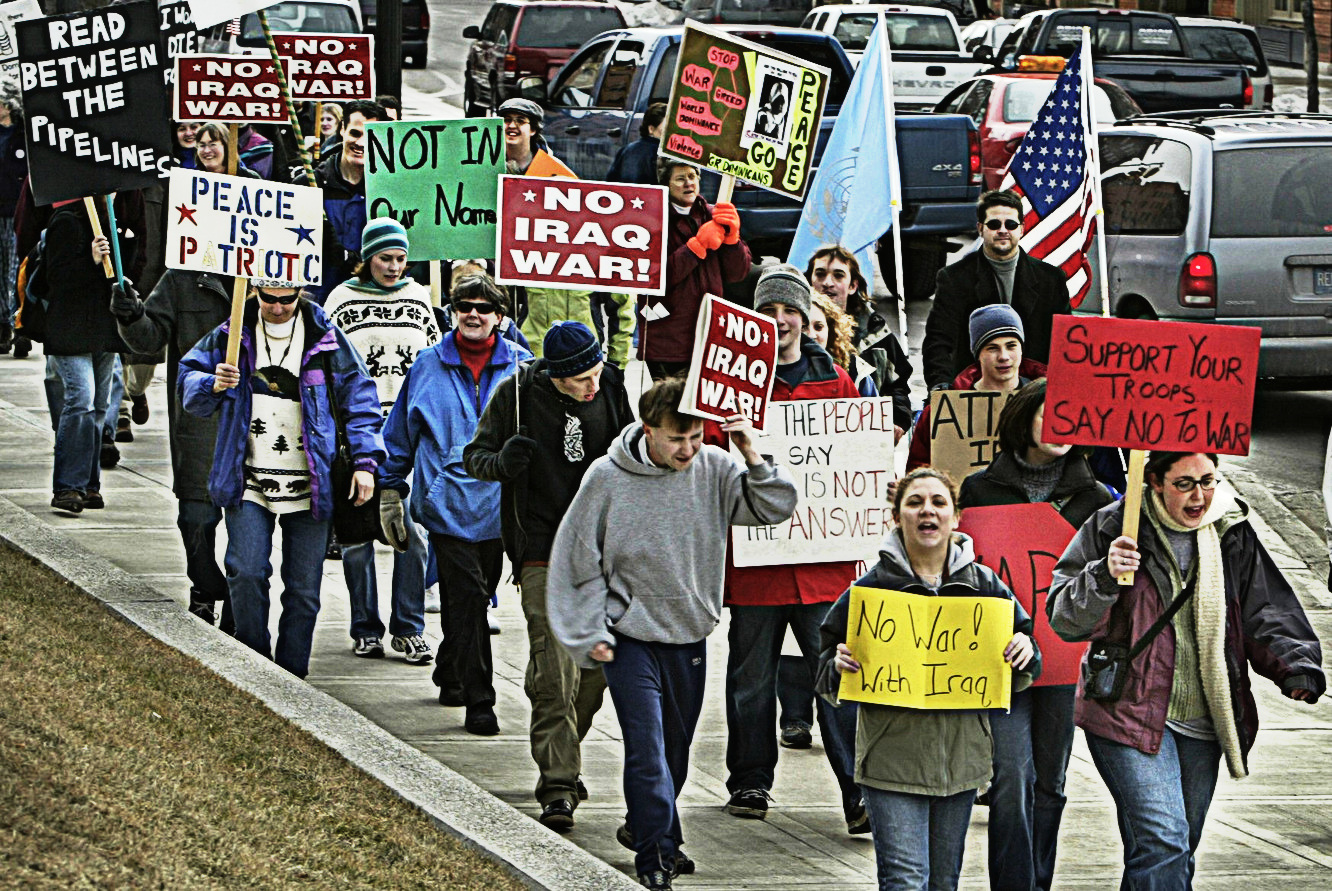
Grand Rapids is Michigan’s second-largest city, a place where political and economic life is dominated by a small group of billionaires and millionaires, most of whom don’t live in the city proper. Names like Meijer, Pew, DeVos, Secchia, Van Andel, and Cook are plastered on the city’s landmarks, university buildings, hospitals, and other major buildings.
Beyond dealing out some philanthropy here and there, the richest 1% also control the political leadership of the city and use its economic productivity, the people’s labor power, and the city’s development as their private resource for capital accumulation.
While the city’s elected officials notoriously pretend it is a place of seamless harmony and liberality, under the surface of “West Michigan nice” bubbles a cauldron of exploitation and oppression, racism, sexism, transphobia, religious bigotry, homophobia, and political repression.
Those supposedly liberal leaders do not want a story told in which, for example, they are revealed to have used the cops to target university students who supported striking bus drivers in 2015. They don’t want to be reminded how they ordered and applauded the violent repression of Black Lives Matter protests after the police murder of George Floyd.
Author Jeff Smith raises this hidden story, this people’s story, to the foreground in his highly readable, generally well-researched, and wide-ranging book A People’s History of Grand Rapids.
Smith, a long-time resident of the city who publicly identifies as an anarchist, modeled his work on Howard Zinn’s best-selling People’s History of the United States. In the introduction, he draws on the well-known statements of the Zapatistas to characterize his work as part of a “war against forgetting.”
The book originated from his decades-long project as a founder of the Grand Rapids Institute for Information Democracy and the Grand Rapids People’s History Project. The latter began as a kind of oral history project in which Smith collected testimonies from activists and city residents who struggled against the dominance of the billionaire class. Some sections, such as the two chapters on peace and solidarity, rely heavily on his memories of his own involvement in the Central America solidarity movements of the 1980s and the anti-Iraq wars in the early 1990s and early 2000s.
The book is composed of ten main chapters of varying size and depth that illuminate how people in Grand Rapids struggled for Black freedom, immigrants’ rights, labor unions and workers’ rights, environmental protections, peace and solidarity, women’s equality, LGBTQ equality, and Indigenous sovereignty.
It covers historical events such as the 1911 Furniture workers’ strike, which brought 4,000 workers in that industry into an (ultimately unsuccessful) struggle for a shorter working day and union recognition, and the city’s anti-draft struggles during the U.S. war on Vietnam.
Smith shows how the Grand Rapids-born President Gerald Ford, for example, was an ally of killers and tyrants like Marcos, Suharto, Pinochet, Franco, and the South African apartheid regime in the name of U.S. imperialism.
The book also documents recent movements like #NoDAPL and #BlackLivesMatter with a specifically local angle and occasionally from a first-person perspective. It traces the struggle by the city’s LGBTQ communities for recognition and equality against extreme right-wing religious views held by the city’s most powerful capitalists.
Smith is at his best in recording struggles through interviews with movement participants. For example, his conversations with contemporary LGBTQ movement activists, Black Lives Matter strugglers, and immigrants’ rights activists sparkle with vitality and enduring relevance. Interviews with Indigenous tribal leaders around struggles against oil pipelines and land and water sovereignty draw the struggle against settler colonialism into the immediate present.
In addition, much of his archival research in local history collections brings to life the words and the leaders of Grand Rapids’ civil rights movement in the 1960s and ’70s, such as Urban League leaders like William Glenn (whose Communist Party membership and UAW leadership isn’t referenced in this book) and Paul Phillips.
Smith’s capacity, through research and interviews, to uplift the words, the worldviews, and the stories of the people who were directly involved in the social movement histories he documents is the strongest feature of this book. This aspect of the book strongly connects it to the similar approach in Zinn’s famous work.
There are a couple of reservations I had about the overall success of this book. While the author states that his aim is to avoid presenting a history of social movements as if they existed in “silos,” this impression is precisely what comes across the strongest. And though the author is interested in the ability of working-class and racially oppressed people to build power, the lack of historical, generational, and organizational continuity left this reader with the notion that in Grand Rapids, struggles simply “pop up” in spontaneous response to oppression, war, or exploitation.
There appear to be few connections between the struggle to organize unions, the multi-racial labor movement, and the Black Freedom Movement, a story that seems to be only partially addressed in this book. Future historians should work to unearth more about how labor movement activists struggled alongside the various social movements Smith highlights in this book.
Part of the problem with this representation of historical events derives from the imposition of larger national frames on a localized space. For example, Smith suggests that because the labor movement during the Cold War seemed to be uninterested in the struggles of Black people, this interpretation must apply to Grand Rapids, and thus no evidence seems to be discovered for a contrary conclusion.
Further, in his historical background on the Anishinaabe peoples of Michigan, many of whom lived in the area that became Grand Rapids, Smith uses long-discredited theoretical frameworks about Indigenous experiences with settler colonialism. He cites one historian who describes how colonial genocide “shattered” Indigenous culture. That specific metaphor implies the destruction of Indigenous cultures, a historical falsehood more thoroughly rebutted by acclaimed Anishinaabe historian Michael J. Witgen in his book An Infinity of Nations.
Indeed, given Smith’s impressive documentation of the Anishinaabe’s ongoing resistance to treaty violations, oil pipelines, and their struggle to retain and expand cultural and territorial sovereignty, that metaphor seems at odds with the argument of this book. Further, confining a story about the Anishinaabe people to the locality around the space that became Grand Rapids ignores the larger territorial framework in which they forge their social identities and societies.
Later in the book, the author makes a sweeping assertion that “[w]hen people engage in direct action it pushes everything to the left.” While this appealing generalization offers an easy solution to power imbalances and social inequality, it seems to go against the evidence of the narratives given and not given in this book.
Smith delivers this pronouncement in his brief discussion of the UAW sit-down strikes in Flint (which diverts us geographically from Grand Rapids by a little over 100 miles). Unfortunately, his telling does not explore how the sit-down strikes were not spontaneous direct actions, but a tactic in a larger strategic mobilization of a wide array of political and social forces, without which the strike would have failed.
Indeed, in most of the chapters covering an extensive range of social movements, Smith documents how organizations used similar approaches to coalition building that combined occasional direct actions with broad alliances of workers and people from multiple social stations and many other tactics, such as teach-ins, marches, letter-writing campaigns, electoral campaigns, and boycotts to build a supportive message and broad political force.
In contrast to this and to his own proclamation, Smith shows how numerous direct actions that were alienated from broader movements, though bravely undertaken, had little impact on the balance of forces. Thus, this book, perhaps contrary to the author’s wishes, underscores how direct action is one among several tactical tools exploited and oppressed people use to challenge those who try to dominate them.
Jeff Smith’s years-long work in collecting and publicizing the stories of people’s resistance to oppression and exploitation in Grand Rapids is invaluable. In addition to the people of this city, this book undoubtedly will be a valuable resource for its future historians.
A People’s History of Grand Rapids
By Jeff Smith
Grand Rapids, Schuler Books, 2023.
We hope you appreciated this article. At People’s World, we believe news and information should be free and accessible to all, but we need your help. Our journalism is free of corporate influence and paywalls because we are totally reader-supported. Only you, our readers and supporters, make this possible. If you enjoy reading People’s World and the stories we bring you, please support our work by donating or becoming a monthly sustainer today. Thank you!












Comments